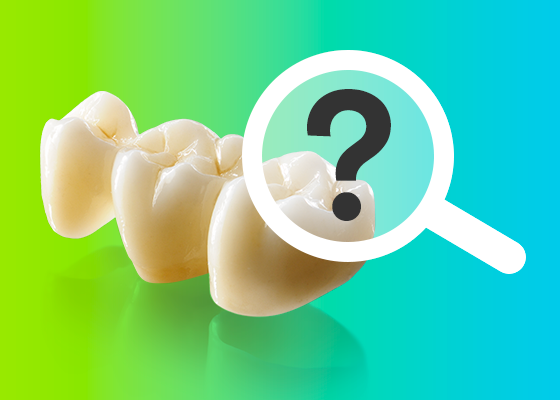Which zirconia should you use?
Zirconia is not a “one-size-fits-all” solution; rather, different materials offer different levels of strength and translucency. Which zirconia is best for you ultimately comes down to your treatment’s esthetic and mechanical needs.
In the past, dental zirconia simply wasn’t very esthetic and required additional steps to achieve a natural-looking result. As the material has advanced, however, so has its esthetic potential. With this in mind, it’s still important to select the right formulation for each case. If esthetics are most important and strength isn’t an issue – such as an esthetic anterior restoration or pre-molar with room for thicker walls – a higher translucency zirconia, such as 5Y zirconia, would be best. Alternatively, when strength is vital – such as posterior restorations or multi-unit bridges – a second-generation, 3Y zirconia would be more appropriate. And while there is no true “universal” zirconia, fourth generation, 4Y zirconia provides a versatile balance of properties for a variety of procedures. Beyond yttria, esthetics can be further enhanced with color shading, either by using pre-shaded zirconia or staining the restoration after placement. The highest esthetics can be achieved by using veneer ceramic over the zirconia coping.
Minimally Invasive Versatility
In addition to these esthetic advancements, modern zirconias complement a more conservative dental philosophy. Lower strength restorative materials require more bulk, or a wall thickness of 1mm or more*, to support the restoration. As a result, more sound tooth structure needs to be removed to create space. However, because zirconia provides more strength, restorative integrity can be achieved with thinner walls – enabling less invasive preparations.
Minimal wall thickness for crowns for different material options.

With all of this in mind, zirconia is still evolving as manufacturers continue to pursue even better esthetics, thinner walls, and shorter sintering times. Zirconia is already biocompatible, and modern formulations offer such a favorable balance of esthetics and strength that material advancements have only made it that much more advantageous. For example, some materials, like 3M™ Lava Esthetic Fluorescent FullContour Zirconia, feature pre-shaded, built-in fluorescence for a more natural result – instead of an added fluorescent glaze that can wear off over time.
Chairside Zirconia
Temporary restorations, working with a lab, return visits for fitting and proper seating… traditional zirconia restorations can be time-consuming procedures. Plus, patients have to endure long wait times and the potential for more pain. Thankfully, in addition to more esthetic, minimally invasive formulations, zirconia has also entered the chairside landscape.
The advent of chairside zirconia has created an opportunity to produce high-strength, esthetic restorations on the same day – no temporaries, multiple visits, or lab needed. A full-digital workflow gives the ability to visualize, analyze and track treatments. It also offers fine control over design and close collaboration between patient and dentist. And because the restoration is produced in-house, without outsourcing to a lab, there’s less risk of miscommunication – and revenue stays in the dental office.

Cementation of Zirconia
A high-strength ceramic material like zirconia is only as good as its bond, and that means paying careful attention to cementation protocols. It’s important to note that the bonding protocol of zirconia is different than other ceramics – in fact, it may actually be easier.
Unlike other ceramics that require many preparation steps to ensure a strong bond, zirconia restorations with adequate retention and ceramic material thickness can be cemented conventionally without many technique-sensitive bonding steps. Adhesive bonding is only required in situations with limited mechanical retention. This applies regardless of zirconia generation. When bonding, it’s critical to remember that zirconia should not be etched, even to remove saliva after try-in. This is because phosphoric acid – and the phosphate in saliva – can block the oxide groups necessary for bonding.4,5 In terms of pre-treatment, zirconia restorations should always be sandblasted prior to final placement. Once clean, the cement can directly be applied, and the restoration can be seated.
With all of the above in mind, the best cementation technique for your zirconia restoration is dependent on the preparation, and its retention. For example, if you’re using zirconia for a veneer (where esthetics are key and a weaker, more translucent zirconia is best), or in situations with limited mechanical retention, adhesive cementation may be more appropriate. It’s a matter of balancing qualities to achieve the best results possible.



